Echoes of History? From 1954 to 2021 - Examining the Unraveling Threads of Capitol Attacks
Reflections on the unthinkable: Exploring a shocking 1954 assault on Capitol Hill and the January 6, 2021, Capitol Siege
Yesterday marked the 3rd anniversary of the horrifying January 6, 2021 United States Capitol Attack. Hundreds were injured, and five ended up dead.1 2 Within months, four officers who’d been involved in the attack had died by suicide.3
What many don’t realize is that the U.S. Capitol has been under attack many times, including one event nearly 70 years ago, on March 1, 1954, during which five congressmen were shot in the House of Representatives. You can read more about that attack here.
I write about the 1954 attack on the Capitol in my newly released biography, Politics, Partnerships, & Power, because one of my subjects — the Honorable Rep. Marguerite Stitt Church (R-IL) — had been standing on the House floor as it was sprayed with bullets.
Click here for a 5-minute NPR piece with eyewitnesses recounting that day.
Here’s a clip from a March 4, 1954 Chicago newspaper:

The column reads:
Marguerite Stitt Church was the “last man down” Monday when three Puerto Rican men opened fire in the House of Representatives. In answer to a phone call from Paddock Publications, Mrs. Church said, “I have never before been under fire and I did not know what to do until Representative Sheehan called me to duck. I ducked. I was literally on the floor.
Mrs. Church added, “It was a very tense three minutes. It seemed incredible to us. No person was safe. We were all possible targets, because the shots were not being aimed at any one person. The shooting started when all Republican members were standing.”
—The Daily Herald (March 4, 1954). Newspapers.com. Retrieved January 6, 2024, from https://www.newspapers.com/article/the-daily-herald-puerto-rican-attackmar/22489538/
One thing you must know about Marguerite Stitt Church — who, in 1950, ran for and won her husband’s vacated seat after he dropped dead of a heart attack while testifying at a congressional hearing — is that she didn’t like to be called a congresswoman. Like many of the (very few) women in congress of her era, Marguerite Stitt Church preferred the term congressman.
Why?
Some might say she explained it best in 1950, upon accepting her party’s nomination for her husband’s vacant seat:
“If a man had been nominated and made a mistake, you would have said he is stupid.
If I make a mistake, you will say she is a woman.
I shall try never to give you reason to say that.
I make no apologies for being a woman, nor would I ever seek office on the basis of being a woman.''4
—Marguerite Stitt Church, 1950
What if Congress couldn’t function in an emergency?
In 2004, fifty years after the 1954 attack on the Capitol, lawmakers first considered legislation for reordering congress in the event of another such catastrophic event. Furthermore, this sobering 2020 piece from the Bipartisan Policy Center, published months before the January 6, 2021 attack, states that, in a case “where many members of Congress are dead or severely incapacitated, leading to an effective shutdown of the legislative branch […]”:
“[…] the Senate would not be the same, but the institution would carry on and reconstitute itself with more than enough senators to meet the quorum requirement of a majority and be able to play its part in governing during the crisis.
However, in the House, the Constitution does not allow the immediate filling of vacancies by appointment – they must be filled by a special election. State laws provide for those elections to take place over many months. And even an attempt to speed up those elections would run into practical and logistical realities such as holding primary elections and getting ballots to overseas voters at least 45 days before an election as required by law, or even difficulties holding the elections at all as we have seen in recent days.
The reality is that a House of Representatives hit by catastrophic loss of life would have a hard time functioning for months. That would mean no role for Congress when all of the important emergency actions are taken to address the crisis at hand.”
In 2021, as I held my breath watching the January 6 attack on the Capitol, knowing what it could meant for the United States if the House of Representatives, in particular, was incapacitated.
A Plea For Peace
Seven years after surviving the 1954 attack, Marguerite Stitt Church stepped into the well of the House on September 21, 1961. Desks and chairs still bore the scars of the shooting in 1954 as the House prepared to vote on funding for a new program called The Peace Corps, proposed by then-President John F. Kennedy (supposedly inspired by an impromptu speech in 1960) — a program many Republican legislators stood firmly (if not vehemently) against.
But on September 21, 1961, Marguerite — who, as a Republican, generally stood for less spending in government — took to the podium and directed her comments toward members of her own party, addressing what she saw as the merits of investing in the Peace Corps:
One of Marguerite’s colleagues, Rep. Catherine May (R-WA), later said, “You quite literally could see people who had been uncertain or perhaps who had already decided to vote against the Peace Corps sit there, listen to her very quietly and start to rethink.”
Many have argued that Marguerite Stitt Church’s impassioned speech led the House to ultimately pass the Peace Corps bill by such a wide margin — 288 to 97 — and for singlehandedly ensuring the passage of the program, now in its 63rd year, engaging more than 240,000 Americans in more than 140 nations, fostering international peace, friendship, volunteerism, and service.

On January 6, 2021, I was at home in the spare bedroom, about to join a team meeting with my fellow Covid-19 Contact Tracers, when I checked the notifications on my phone. I’d recently had my first dose of the Covid-19 vaccine and feeling a bit foggy when the notifications set my phone buzzing. The headlines and images just didn’t seem real.
Are those people actually breaking down doors in the Capitol building? Where’s that smoke coming from? Why isn’t anyone stopping this?
Looking closer at the images, it hit me: I’d been on those very steps—and in those sacred halls—while researching Politics, Partnerships, & Power. What in God’s name is happening?
Immediately, I flashed back to one of my D.C. research visits for the book. On one day, I’d stepped into an elevator on Capitol Hill and, as the door closed, a woman began shouting. It took me a long second before realizing she was shouting at me.
I later learned she was North Carolina Representative Virginia Foxx.
For the next thirty seconds, as the elevator slowly ascended to the next floor, Foxx dressed me down, making it clear to everyone in the car that I’d stepped into a space that was off-limits to the public — designated for legislators only.
I kept my head hung low as I offered repeated apologies, then quickly exited the car before the elevator doors fully opened. As embarrassed (and annoyed) as I was about
a) Foxx’s shaming approach and
b) the lack of wayfaring signs,
the fact was, she was right: I’d crossed a line and stepped into a space designated for my country’s elected individuals.
Watching the January 6 breach of the Capitol rage on, I remembered how I’d first reacted to learning of the March 1, 1954 Capitol shooting — how I’d been utterly certain that something like that would never happen now.
I mean, even while working with archival materials in 2017, I’d had to register for clearance, provide approvals and identification, put my personal items in lockers, and wear gloves when handling delicate, archived papers. During my time on Capitol Hill, I came to know it as a space deserving of respect, reverence, and order.
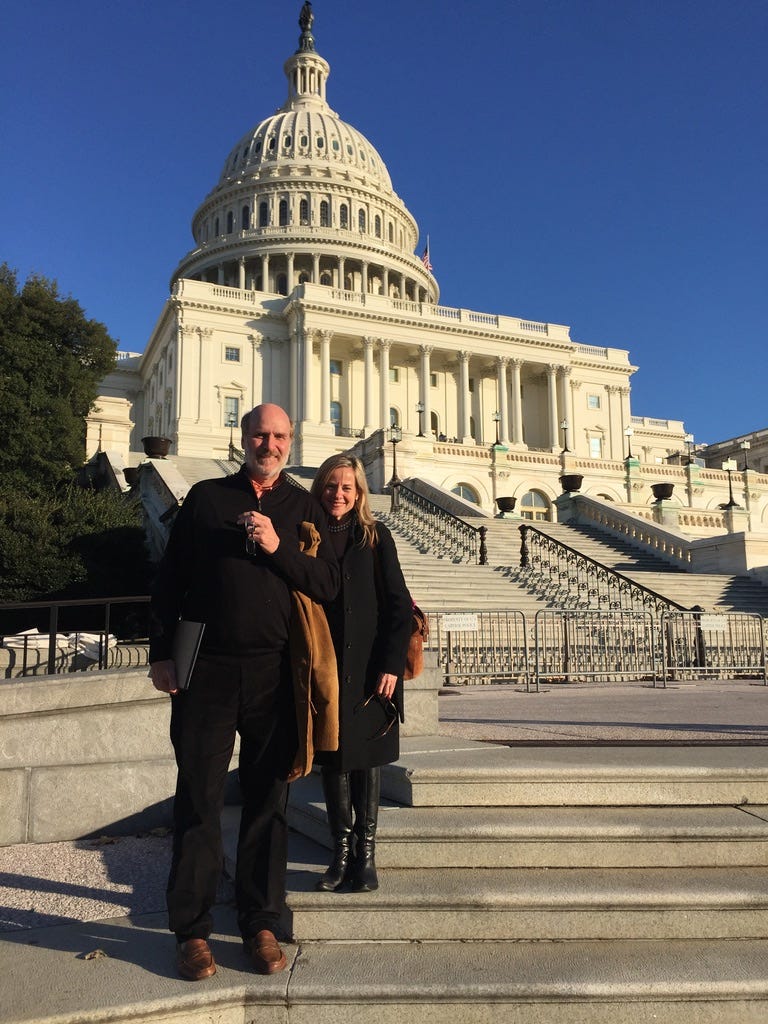
While researching the book, Rep. Jan Schakowsky (D-IL) — who now represents the district that had once been overseen by Ralph and Marguerite Stitt Church — took my co-author and I on a behind-the-scenes tour of the Capitol. We’d hoped to see the places in which our subjects had worked and spent their time while in Washington. We needed to see where Ralph had dropped dead of a heart attack, where Marguerite corresponded with constituents in my hometown of Evanston, Illinois, and where she sat and wrote her speeches and pinned up her hair before heading down to the House floor where, quite impressively, she’d missed only 4 votes during her 12 years in office.
Rep. Schakowsky took us everywhere Ralph and Marguerite had been: we rode the subway system that travels under the U.S. Capitol Complex; we spent time in Ralph and Marguerite’s former offices; we toured and ate lunch in the Dining Room of the House of Representatives, where Marguerite had been the first person ever to welcome Black citizens; we stepped into rotundas, hallways, private cloak rooms, and yes, even private elevators.
With security everywhere, I felt safe and deeply honored as I walked through these ornate and immaculately maintained buildings and spaces. It was a privilege to be in these places.

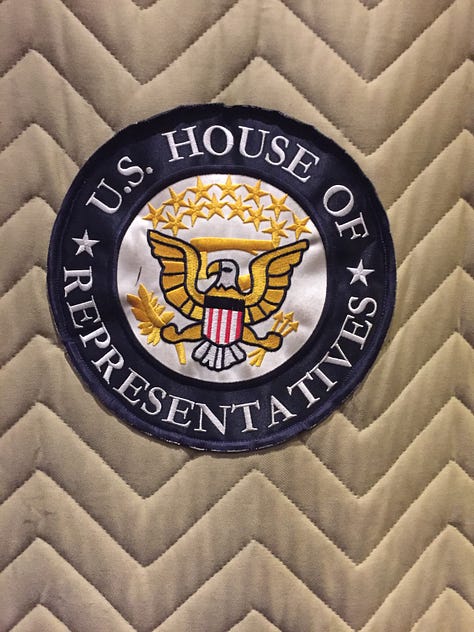


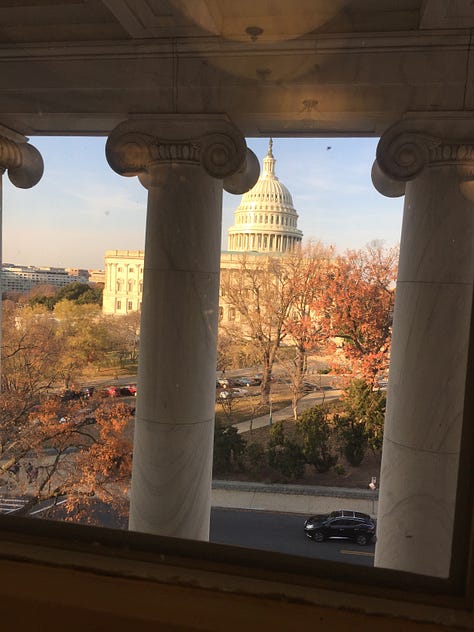
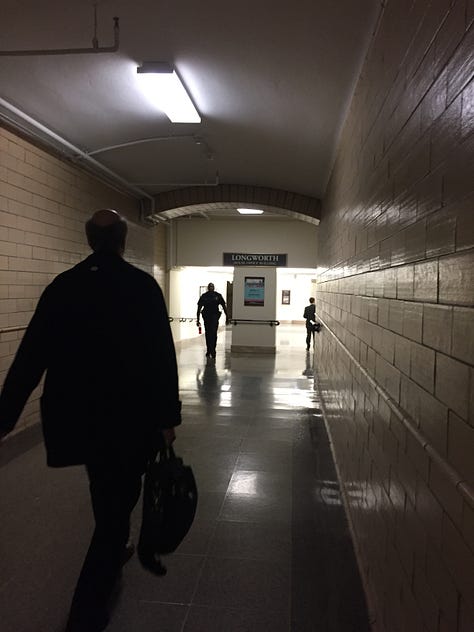


But then, I watched the images on January 6, 2021 — the angry crowds breaking glass and shoving police, the people threatening legislators with weapons, the elected officials and office workers literally running for their lives.
I couldn’t comprehend the explosive images I saw — the smashing, pushing, ransacking, burning, screaming, threatening, trampling, bleeding, terrified chaos.
While I worked on Politics, Partnerships, & Power, I was certain that events like the Capitol shooting on March 1, 1954 — in which 5 legislators were shot — were a thing of the past, that we’d, as a country, moved beyond such barbaric times, that we’d grown wiser, safer, and more connected as a society.
I was wrong.
Watching the day unfold into chaos on January 6, 2021, I rubbed my sore, newly-vaccinated arm and sat in stunned silence, unable to understand how anyone could EVER think that a rage-fueled rampage could possibly make our country great again.
I can’t help but wonder what Marguerite Stitt Church would say of our country today.
When, if ever, will we learn from our own history?

Massimo, Nick (April 19, 2021). "Medical examiner: Capitol Police officer Sicknick died of stroke; death ruled 'natural'". WTOP. Associated Press. Archived from the original on May 6, 2021. Retrieved January 7, 2024.
Evelyn, Kenya (January 9, 2021). “Capitol attack: the five people who died”. The Guardian. Archived from the original on November 19, 2021. Retrieved January 7, 2024.
Wolfe, Jan (August 2, 2021). “Four officers who responded to U.S. Capitol attack have died by suicide”. Reuters. Archived from the original on April 4, 2022. Retrieved January 7, 2024.
Luft, Kerry. “Marguerite Stitt Church, Ex-Congresswoman,” Chicago Tribune, May 27, 1990.
Memoir coach Christine Wolf is the co-author of Politics, Partnerships, & Power: The Lives of Ralph E. and Marguerite Stitt Church (Master Wings Publishing, December 2023).



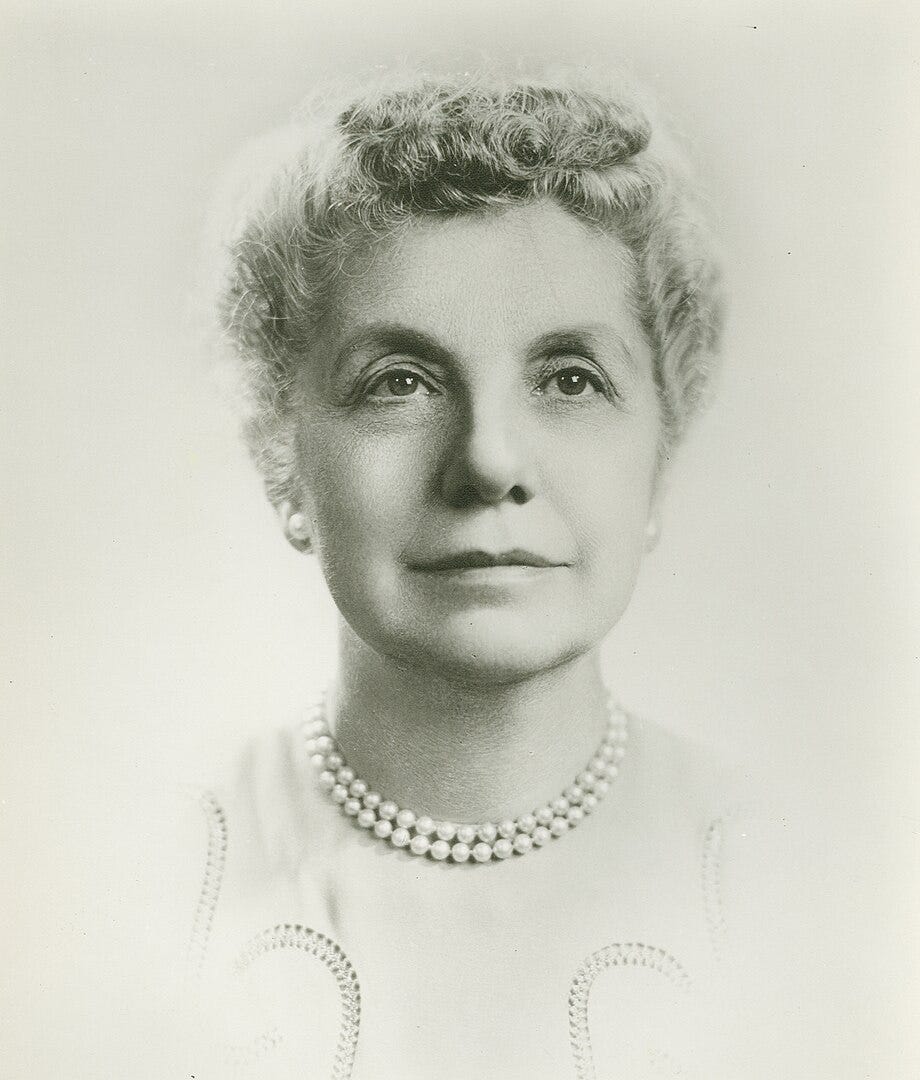

Wow. I had no idea of this history. Either did my husband, and he has a keen mind for political history. Also, great story about your research and being dressed down for overstepping the bounds. I'm sure it felt awful at the time, but so on point to our current history. Thank you for sharing!